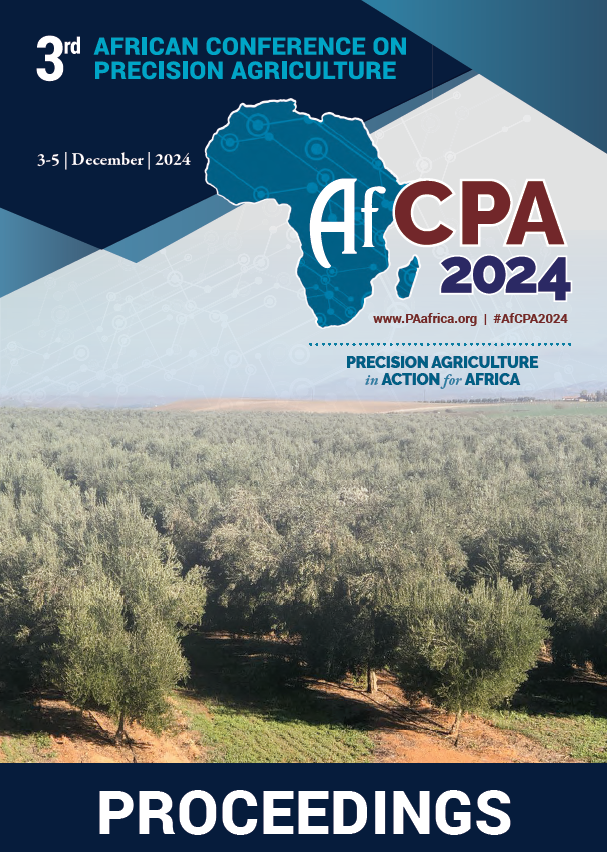Download the Conference Proceedings
Proceedings
Authors
| Filter results5 paper(s) found. |
|---|
1. détermination du bilan minéral partiel des exploitations agricoles à base du coton à l’aide du modèle NUTMONLa dégradation des sols des exploitations agricoles constitue ces dernières années une des causes principales des baisses de rendements au champ. A cet effet, la détermination quantitative des éléments nutritifs des sols cultivés peut contribuer à concevoir des stratégies de gestion durable de la fertilité de ces sols. C’est dans cette optique que 30 exploitations agricoles à base de coton ont été... A. Komlan, K. Kokou zovodu, A. Bassarou, G. Esso-iheyou, P. Justin |
2. Scale Independent Precision AgricultureThe advent of precision agriculture that occurred in the USA about three decades ago involved application of advanced and innovative technologies. Precision agriculture in the US and other advanced countries continued in that direction and today it is more sophisticated and complex than before. Interestingly, the concept of Precision Agriculture is relatively simple and does not mandate utilization of advanced technologies to practice precision agriculture. For example, it may take a suite... R. Khosla |
3. On-farm experimentation. A major role for precision agriculture in African agricultureIs precision agriculture relevant to African Ag? Most people envision fancy technology when they consider precision agriculture (PA). Indeed, over the past 30 years or more PA has introduced a range of exciting technologies to agriculture. But the real change is not the technology itself, but the new ways technology enables farmers to manage complex and uncertain systems. This message dates back to the early days of PA but has been superseded by technological prowess and needs to be... S. Cook |
4. The Global Crop Nutrient Removal Database (Gcnrd): Development, Initial Analysis and Identification of Current Data GapsImproved understanding of the factors affecting nutrient uptake can enable production optimization, increased nutrient use efficiencies, reduced environmental footprints, and overall higher economic returns for farmers. Crop uptake is affected by genetics, soil, weather, agronomic practices, and their interactions. As such, understanding the way crop nutrient uptake varies across different regions and production environments requires the coverage of various parameters, and necessitates collaboration... C. Ludemann, A. Dobermann, N. Graff, S. Sela, M. Van loon, R. Hijbeek, M. Van ittersum |
5. The Value and Potential of On-Farm Experimentation to Catalyze Agricultural TransformationOn-farm experimentation (OFE), which inculcates farmers’ agency in knowledge discovery, has the potential to support and accelerate transformative agronomy at scale. The OFE process within the Nutrient-Catalyzed Agricultural Transformation in Africa (NUTCAT) project, encompasses farmer engagements, set-up of simple, easy-to-understand treatment designs, and contextual analysis of the data to enhance the relevance of the results to farmers. Ultimately, it is envisaged that this process will... I. Adolwa, J. Muthamia, C. Lutomia, , S. Cook |
